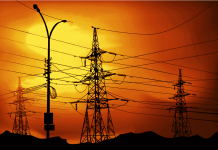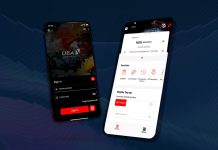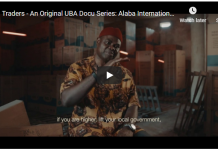The Republic of Cameroon is
a country in the Central Africa region with 475,442 square kilometers and is the world’s 53rd largest country. It is located in Central Africa
on the Bight of Bonny, part of the Gulf of Guinea and the Atlantic Ocean.
a country in the Central Africa region with 475,442 square kilometers and is the world’s 53rd largest country. It is located in Central Africa
on the Bight of Bonny, part of the Gulf of Guinea and the Atlantic Ocean.
Tourist
literature describes Cameroon as a “Miniature Africa” because it exhibits all
major climates and vegetation of the continent like coast, desert, mountains,
rain forest, and savannah. The country’s neighbours are Nigeria to the west;
Chad to the northeast; the Central African Republic to the east; and Equatorial
Guinea, Gabon, and the Republic of the Congo to the south. The highest point is
Mount Cameroon in the southwest, and the largest cities are Douala, Yaoundé and
Garoua. Cameroon is home to over 200 different linguistic groups and is well
known for its native styles of music, particularly makossa and bikutsi, and for
its successful national football team. French and English are the official
languages.
literature describes Cameroon as a “Miniature Africa” because it exhibits all
major climates and vegetation of the continent like coast, desert, mountains,
rain forest, and savannah. The country’s neighbours are Nigeria to the west;
Chad to the northeast; the Central African Republic to the east; and Equatorial
Guinea, Gabon, and the Republic of the Congo to the south. The highest point is
Mount Cameroon in the southwest, and the largest cities are Douala, Yaoundé and
Garoua. Cameroon is home to over 200 different linguistic groups and is well
known for its native styles of music, particularly makossa and bikutsi, and for
its successful national football team. French and English are the official
languages.
Early
inhabitants of the territory included the Sao civilization around Lake Chad and
the Baka hunter-gatherers in the south-eastern rain forest. Portuguese explorers
reached the coast in the 15th century and named the area Rio dos Camarões
(Shrimp River), which became Cameroon in English. Fulani soldiers founded the
Adamawa Emirate in the north in the 19th century, and various ethnic groups of
the west and northwest established powerful chiefdoms and fondoms. Cameroon
became a German colony in 1884.
inhabitants of the territory included the Sao civilization around Lake Chad and
the Baka hunter-gatherers in the south-eastern rain forest. Portuguese explorers
reached the coast in the 15th century and named the area Rio dos Camarões
(Shrimp River), which became Cameroon in English. Fulani soldiers founded the
Adamawa Emirate in the north in the 19th century, and various ethnic groups of
the west and northwest established powerful chiefdoms and fondoms. Cameroon
became a German colony in 1884.
After
World War I, the territory was divided between France and Britain as League of
Nations mandates. The Union des Populations du Cameroun (UPC) political party
advocated independence, but was outlawed by France in the 1950s. It waged war
on French and UPC militant forces until 1971. In 1961 the southern part of the
British territory joined the new Federal Republic of Cameroon and the northern
section voted for unification with Nigeria. The President of Cameroon since
independence, Ahmadou Ahidjo was replaced in 1982 by the Prime Minister, Paul
Biya.
World War I, the territory was divided between France and Britain as League of
Nations mandates. The Union des Populations du Cameroun (UPC) political party
advocated independence, but was outlawed by France in the 1950s. It waged war
on French and UPC militant forces until 1971. In 1961 the southern part of the
British territory joined the new Federal Republic of Cameroon and the northern
section voted for unification with Nigeria. The President of Cameroon since
independence, Ahmadou Ahidjo was replaced in 1982 by the Prime Minister, Paul
Biya.
With
the expansion of oil, timber, and coffee exports, the economy has continued to
improve, although corruption is prevalent, and environmental degradation
remains a concern. In June 2000 the World Bank agreed to provide more than $200
million to build a $3.7 billion pipeline connecting the oil fields in
neighbouring Chad with the Cameroon coast. In August 2006, Nigeria turned over the
disputed oil-rich Bakassi peninsula to Cameroon.
the expansion of oil, timber, and coffee exports, the economy has continued to
improve, although corruption is prevalent, and environmental degradation
remains a concern. In June 2000 the World Bank agreed to provide more than $200
million to build a $3.7 billion pipeline connecting the oil fields in
neighbouring Chad with the Cameroon coast. In August 2006, Nigeria turned over the
disputed oil-rich Bakassi peninsula to Cameroon.
Cameroon’s
population is estimated at 20 million people. The major ethnic groups are
Cameroon Highlanders 31%, Equatorial Bantu 19%, Kirdi 11%, Fulani 10%,
North-western Bantu 8%, Eastern Nigritic 7%, other African 13%, non-African
less than 1%.
population is estimated at 20 million people. The major ethnic groups are
Cameroon Highlanders 31%, Equatorial Bantu 19%, Kirdi 11%, Fulani 10%,
North-western Bantu 8%, Eastern Nigritic 7%, other African 13%, non-African
less than 1%.
ECONOMY
Cameroon’s
real economic growth is estimated at 5.4% for 2013, driven by a recovery in the
oil sector and a rise in agricultural production. According
to IMF growth will need to be maintained at a higher level for Cameroon to
reach its middle income status by 2035 hence her reason for pressurizing the
government to drop petrol subsidies.
real economic growth is estimated at 5.4% for 2013, driven by a recovery in the
oil sector and a rise in agricultural production. According
to IMF growth will need to be maintained at a higher level for Cameroon to
reach its middle income status by 2035 hence her reason for pressurizing the
government to drop petrol subsidies.
Higher
growth in 2012 risks generating a 2.4% increase in inflation, but it will still
be below the 3% limit set by the Central African Economic and Monetary
Community (CEMAC). It should be noted that this is one of the 4 criteria for
country risk assessment by Central Bank. Cameroon currently has a 0% country
risk weighting which is the best in the CEMAC region. Overall,
the oil output will rise from an estimated 66,000 barrels/day (b/d) in 2012 to
just over 96,000 b/d in 2017.
growth in 2012 risks generating a 2.4% increase in inflation, but it will still
be below the 3% limit set by the Central African Economic and Monetary
Community (CEMAC). It should be noted that this is one of the 4 criteria for
country risk assessment by Central Bank. Cameroon currently has a 0% country
risk weighting which is the best in the CEMAC region. Overall,
the oil output will rise from an estimated 66,000 barrels/day (b/d) in 2012 to
just over 96,000 b/d in 2017.
The
oil sector’s contribution to GDP could be even higher if a planned refinery in
Kribi kicks off production before 2015. Credit
to the Economy rose by 2.6%. Various efforts aimed at boosting the economy at
various levels include a World Bank loan of $100 million to Cameroon to finance
agricultural projects. This is aimed at boosting output and creating job
opportunities in the agricultural sector which employs about 80% of Cameroon’s
active population.
oil sector’s contribution to GDP could be even higher if a planned refinery in
Kribi kicks off production before 2015. Credit
to the Economy rose by 2.6%. Various efforts aimed at boosting the economy at
various levels include a World Bank loan of $100 million to Cameroon to finance
agricultural projects. This is aimed at boosting output and creating job
opportunities in the agricultural sector which employs about 80% of Cameroon’s
active population.
The
Kribi Seaport is Cameroon’s main infrastructure that will allow the export of
minerals and industrialization. Two specialized terminals-multipurpose and
container-will be created: The construction of this port by the Chinese
company, China Harbour Engineering Company (Chec) is underway. The first ship
would dock at the port by 2014. But other specific terminals will be developed
as from 2015. These terminals include aluminium, oil, alumina, ore, liquefied
natural gas, etc.
Kribi Seaport is Cameroon’s main infrastructure that will allow the export of
minerals and industrialization. Two specialized terminals-multipurpose and
container-will be created: The construction of this port by the Chinese
company, China Harbour Engineering Company (Chec) is underway. The first ship
would dock at the port by 2014. But other specific terminals will be developed
as from 2015. These terminals include aluminium, oil, alumina, ore, liquefied
natural gas, etc.
According
to Louis Paul Motaze, Chairman of the Steering Committee of the Kribi
industrial port complex, “the port which will be used to export large masses of
minerals found in Cameroon (iron, bauxite and natural gas in particular) and
import raw materials for local industries, will be a real lever to the
industrialization of Cameroon and the competitiveness of its products.” This
port will thus enable miners to ship their ore overseas.
to Louis Paul Motaze, Chairman of the Steering Committee of the Kribi
industrial port complex, “the port which will be used to export large masses of
minerals found in Cameroon (iron, bauxite and natural gas in particular) and
import raw materials for local industries, will be a real lever to the
industrialization of Cameroon and the competitiveness of its products.” This
port will thus enable miners to ship their ore overseas.
CULTURE
Cameroon
has distinct regional cultural, religious, and political traditions as well as
ethnic variety. The division of the country into British and French ruled
League of Nations mandates after World War I created Anglophone and Francophone
regions. The English-speaking region consists of the Southwest and Northwest
provinces, where Pidgin English is the lingua franca and English is taught in
school. The educational system and legal practices derive from those of
England. The French-speaking region consists of the remaining eight regions,
where French is the lingua franca, the French school system is used, and the
legal system is based on the statutory law of continental Europe.
has distinct regional cultural, religious, and political traditions as well as
ethnic variety. The division of the country into British and French ruled
League of Nations mandates after World War I created Anglophone and Francophone
regions. The English-speaking region consists of the Southwest and Northwest
provinces, where Pidgin English is the lingua franca and English is taught in
school. The educational system and legal practices derive from those of
England. The French-speaking region consists of the remaining eight regions,
where French is the lingua franca, the French school system is used, and the
legal system is based on the statutory law of continental Europe.
The
English-speaking region is divided into two cultural regions. The Grassfields
peoples of the Northwest Province consist of nearly one hundred chiefdoms each
ruled by a divine king (fon) . Most of these chiefdoms have patrilineal or dual
descent kinship systems, although some groups, such as the Kom, are
matrilineal. Polygyny and fertility are important cultural values, although
this varies by wealth and education. The social organization and culture of the
Grassfielders are closely related to those of the French-speaking Bamiléké
peoples of the Western province.
English-speaking region is divided into two cultural regions. The Grassfields
peoples of the Northwest Province consist of nearly one hundred chiefdoms each
ruled by a divine king (fon) . Most of these chiefdoms have patrilineal or dual
descent kinship systems, although some groups, such as the Kom, are
matrilineal. Polygyny and fertility are important cultural values, although
this varies by wealth and education. The social organization and culture of the
Grassfielders are closely related to those of the French-speaking Bamiléké
peoples of the Western province.
The
people of the Southwest province had less hierarchical systems of governance
and social organization. The British appointed warrant chiefs to aid their
colonial rule, and in many instances the population rallied behind those chiefs
in the postcolonial period. The peoples of the Southwest province include the
Bakweri, who live along the slopes of Mount Cameroon.
people of the Southwest province had less hierarchical systems of governance
and social organization. The British appointed warrant chiefs to aid their
colonial rule, and in many instances the population rallied behind those chiefs
in the postcolonial period. The peoples of the Southwest province include the
Bakweri, who live along the slopes of Mount Cameroon.
In
the French-speaking area, the largely Muslim north is culturally distinct from
the largely Christian and animist south. The northern area includes three
regions: Adamawa, North, and Far North culturally dominated by the Fulani.
Urban Fulani are renowned as clerics in the Sunni branch of Islam. Most Fulani
are cattle herders. An important subgroup are the Bororo, noted for the size of
their cattle herds. With their Hausa colleagues, they engage in long-distance
trade involving cattle. Other northern ethnic groups include the Mandara,
Kokoto, and Arab Choa. Major crops include cotton and millet.
the French-speaking area, the largely Muslim north is culturally distinct from
the largely Christian and animist south. The northern area includes three
regions: Adamawa, North, and Far North culturally dominated by the Fulani.
Urban Fulani are renowned as clerics in the Sunni branch of Islam. Most Fulani
are cattle herders. An important subgroup are the Bororo, noted for the size of
their cattle herds. With their Hausa colleagues, they engage in long-distance
trade involving cattle. Other northern ethnic groups include the Mandara,
Kokoto, and Arab Choa. Major crops include cotton and millet.
Most
of the southern peoples are Christian or engage in traditional, animist
religious practices. The Centre, South, and East provinces are characterized by
dense tropical rain forest. The Centre and South are culturally dominated by
the Beti peoples, which include the Ewondo, Eton, and Bulu, and are
linguistically and culturally related to the Fang of Gabon. They are
patrilineal, grow root crops and peanuts for their own consumption, and grow
cocoa as a cash crop. Peoples in the East include the Maka and Gbaya, both with
relatively egalitarian forms of social organization. A sense of common national
culture has been created through shared history, schooling, national holidays
and symbols, and enthusiasm for soccer.
of the southern peoples are Christian or engage in traditional, animist
religious practices. The Centre, South, and East provinces are characterized by
dense tropical rain forest. The Centre and South are culturally dominated by
the Beti peoples, which include the Ewondo, Eton, and Bulu, and are
linguistically and culturally related to the Fang of Gabon. They are
patrilineal, grow root crops and peanuts for their own consumption, and grow
cocoa as a cash crop. Peoples in the East include the Maka and Gbaya, both with
relatively egalitarian forms of social organization. A sense of common national
culture has been created through shared history, schooling, national holidays
and symbols, and enthusiasm for soccer.
SITES OF CAMEROON
The Waza National Park
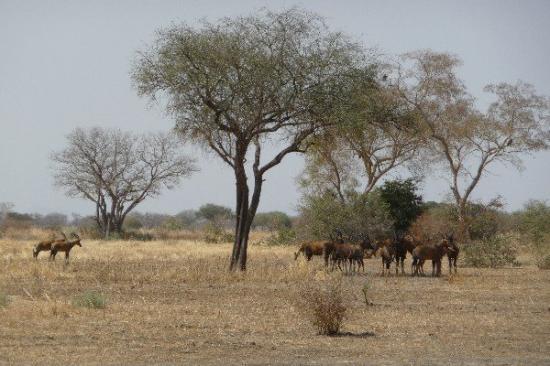 |
| Image Credit: www.tripadvisor.com |
Waza National Park is a national park in Far North
Region, Cameroon. It was founded in 1934 as a hunting reserve, and covers a
total of 1,700 square kilometres. Waza achieved national park
status in 1968, and became a UNESCO biosphere reserve in 1979. The prominent
faunal species reported to inhabit the park are lion, elephant, hyena,
hartebeest, roan, Buffon’s kob, waterbuck, reed, gazelle and giraffe. The
avifauna reported are geese, egrets, ostriches, herons, pelicans, jabirus and
ibis.
Region, Cameroon. It was founded in 1934 as a hunting reserve, and covers a
total of 1,700 square kilometres. Waza achieved national park
status in 1968, and became a UNESCO biosphere reserve in 1979. The prominent
faunal species reported to inhabit the park are lion, elephant, hyena,
hartebeest, roan, Buffon’s kob, waterbuck, reed, gazelle and giraffe. The
avifauna reported are geese, egrets, ostriches, herons, pelicans, jabirus and
ibis.
Mont Rhumsiki Far North
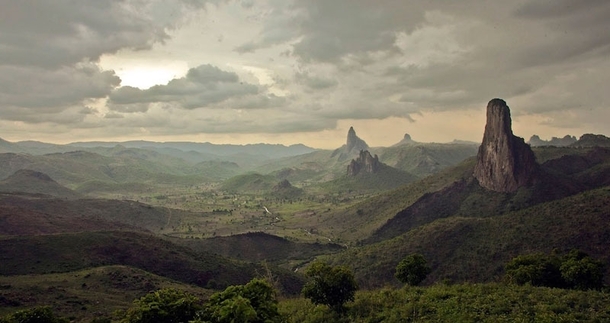 |
| Image credit: www.photorator.com |
The attraction is the surrounding scenery
described as a remarkable, striking and breath-taking landscape. Rhumsiki’s
surroundings are one of the most beautiful landscapes in the world. The
spectacular effect is created by surrounding volcanic plugs the remnants of
long-dormant volcanoes, basalt outcroppings, and the Mandara Mountains. The
largest of these rocks is Kapsiki Peak, a plug standing 1,224 m (4,016 feet)
tall.
described as a remarkable, striking and breath-taking landscape. Rhumsiki’s
surroundings are one of the most beautiful landscapes in the world. The
spectacular effect is created by surrounding volcanic plugs the remnants of
long-dormant volcanoes, basalt outcroppings, and the Mandara Mountains. The
largest of these rocks is Kapsiki Peak, a plug standing 1,224 m (4,016 feet)
tall.
The National Museum
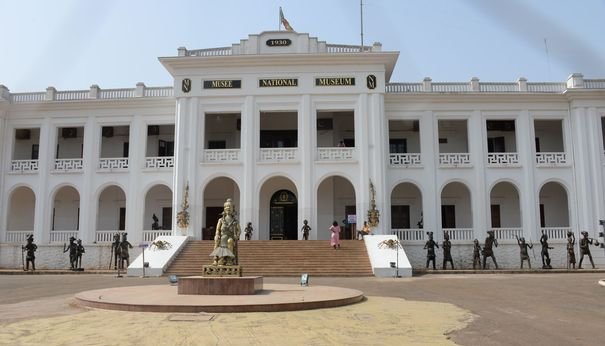 |
| Image credit: LinkedIn |
The
National Museum of Yaoundé in Cameroon is one of the most popular tourist
attractions in Cameroon. The museum houses a wide array of Cameroonian art
collections including paintings, archaeological sculptures and traditional
artefacts.
National Museum of Yaoundé in Cameroon is one of the most popular tourist
attractions in Cameroon. The museum houses a wide array of Cameroonian art
collections including paintings, archaeological sculptures and traditional
artefacts.
The
National Museum of Yaoundé also has art objects of prehistoric times of Africa.
It features the specimens of Sao civilization that originated in the northern
part of Cameroon. Presently, the museum is situated in a ministerial building
near the Ministry of Public Service and National Education. This art museum is
owned by Department of Cultural Conservation of Cameroon. The Cultural Affairs
Ministry of Yaounde regulates all the activities of this museum.
National Museum of Yaoundé also has art objects of prehistoric times of Africa.
It features the specimens of Sao civilization that originated in the northern
part of Cameroon. Presently, the museum is situated in a ministerial building
near the Ministry of Public Service and National Education. This art museum is
owned by Department of Cultural Conservation of Cameroon. The Cultural Affairs
Ministry of Yaounde regulates all the activities of this museum.
Mount Cameroon
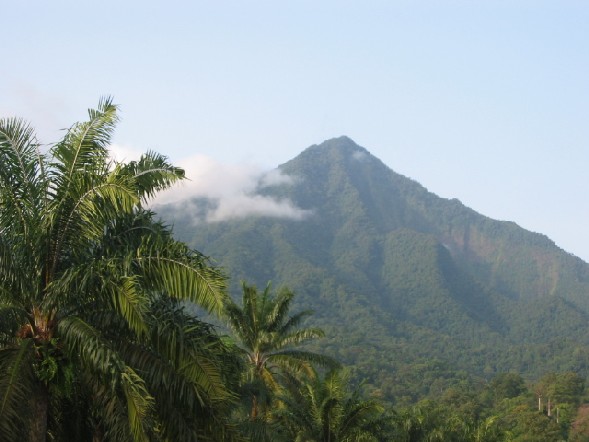 |
| Image credit: cameroontourismlink.wordpress.com |
This
is one of the highest mountains in West Africa at 4,100 metres. An
active volcano, it has erupted six times this century, the latest event being
on May 28, 2000. The
mountain is host to many exotic birds and plants, many of the plants being used
for medicinal purposes.
is one of the highest mountains in West Africa at 4,100 metres. An
active volcano, it has erupted six times this century, the latest event being
on May 28, 2000. The
mountain is host to many exotic birds and plants, many of the plants being used
for medicinal purposes.
Each
year a race is held on Mount Cameroon, where competitors from all over the
world run up and down the mountain. Climbers usually take a bottle with a
message in it, to leave at the summit. Climbers are advised to be wary of stone
throwing monkeys, and not to souvenir anything from the mountain as this would
be offensive to the local people, and bring the ire of the mountain gods.
year a race is held on Mount Cameroon, where competitors from all over the
world run up and down the mountain. Climbers usually take a bottle with a
message in it, to leave at the summit. Climbers are advised to be wary of stone
throwing monkeys, and not to souvenir anything from the mountain as this would
be offensive to the local people, and bring the ire of the mountain gods.
The
mountain is held in awe by the local villagers, and it is believed that an
eruption is caused by either the death of a chief, or the presence on the
mountain of outsiders. The scientific explanation holds little credibility in
the region. By coincidence a chief has died prior to the last two eruptions,
reinforcing tribal beliefs.
mountain is held in awe by the local villagers, and it is believed that an
eruption is caused by either the death of a chief, or the presence on the
mountain of outsiders. The scientific explanation holds little credibility in
the region. By coincidence a chief has died prior to the last two eruptions,
reinforcing tribal beliefs.
Foumban Palace and Museum
 |
| Image credit: tripadvisor.co.uk |
Dating
back in time to the royal dynasties in Foumban, Cameroon, this city is now the
most sought after travel destination for most tourists since its rich history
can be visited and experienced through the eyes of modern times. Imagine all
the luxury of these kings or chieftains and you would want to be transported
back in time to be among their chosen people.
back in time to the royal dynasties in Foumban, Cameroon, this city is now the
most sought after travel destination for most tourists since its rich history
can be visited and experienced through the eyes of modern times. Imagine all
the luxury of these kings or chieftains and you would want to be transported
back in time to be among their chosen people.
Foumban,
Cameroon has some of the loveliest beaches to visit. They are hidden from view
and will require you to travel a bit, but worth the effort as these virgin
beaches would definitely take your breath away. This
is a place shopping never seems to stop as some of the greatest tourist
attractions are the arts and souvenir shops.
Cameroon has some of the loveliest beaches to visit. They are hidden from view
and will require you to travel a bit, but worth the effort as these virgin
beaches would definitely take your breath away. This
is a place shopping never seems to stop as some of the greatest tourist
attractions are the arts and souvenir shops.








